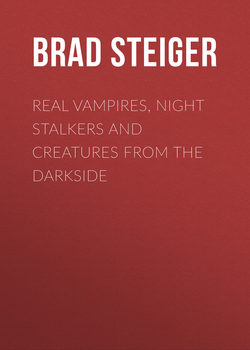Читать книгу Real Vampires, Night Stalkers and Creatures from the Darkside - Brad Steiger - Страница 35
На сайте Литреса книга снята с продажи.
Macumba
ОглавлениеThe ancient highly respected role of the shaman remains central to Macumba (also known as Spiritism, Candomble, and Umbanda), a religious expression still practiced by a large number of Brazilians. The shaman (most often a male) enters into a trance state and communicates with the spirits in order to gain advice or aid for the supplicants. Altered states of consciousness among the practitioners are encouraged by dancing and drumming, and the evening ceremony is climaxed with an animal sacrifice.
Macumba was born in the 1550s from a blending of the African spirit worship of the slaves who had been brought to Brazil and the Roman Catholicism of the slaveholders. As with the origins of Santeria, the native priests soon realized how complementary the two faiths could be—especially since, unlike the slave owners in the United States, the Brazilians allowed the slaves to keep their drums. From the melding of the two religious faiths, the African slaves created the samba, the rhythm of the saints. The African god, Exu, became St. Anthony; Iemanja became Our Lady of the Glory; Oba became St. Joan of Arc; Oxala became Jesus Christ; Oxum became Our Lady of the Conception, and so on.
Those who participate in a Macumba ceremony enter a trance during the dancing and the drumming and allow a god to possess them. Once the possession has taken place, the shaman must determine which gods are in which dancer so the correct rituals may be performed. The process is assisted by the sacrifice of an animal, and the shaman smearing blood over the cult members. Once the members have been blooded, they take an oath of loyalty to the cult. Later, when the possessing spirit has left them, the members of the Macumba cult usually have no memory of the ritual proceedings.
